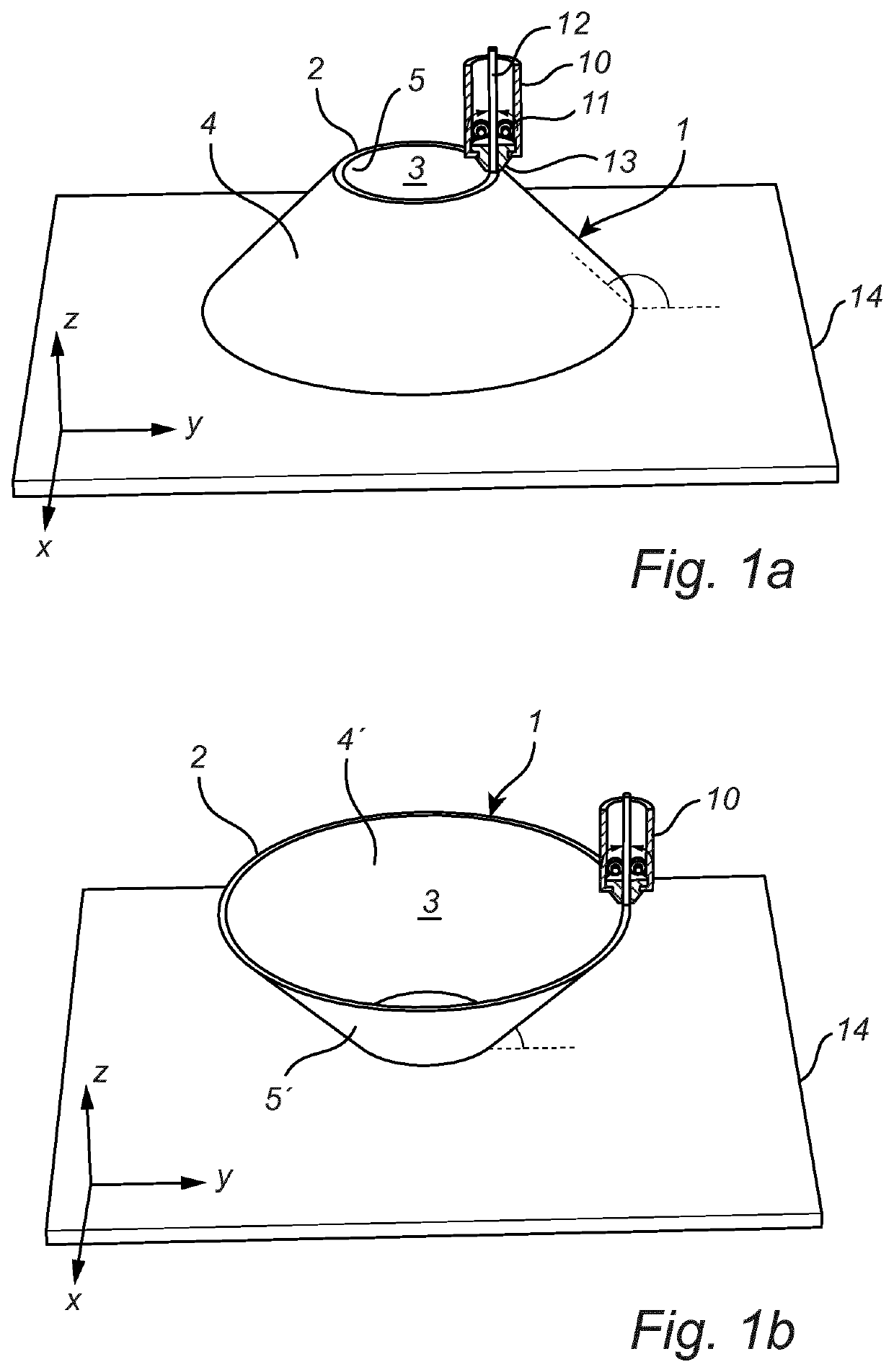3D printing of objects with optical functional surfaces
a technology of optical functional surfaces and objects, applied in the direction of additive manufacturing processes, lighting and heating apparatus, instruments, etc., can solve the problems of relatively low thermal conductivity and poor stability of photocurable materials to be useful for injection molding applications
- Summary
- Abstract
- Description
- Claims
- Application Information
AI Technical Summary
Benefits of technology
Problems solved by technology
Method used
Image
Examples
Embodiment Construction
[0029]Currently preferred embodiments of the present invention will now be described in more detail, with reference to the accompanying drawings. The invention may, however, be embodied in many different forms and should not be construed as limited to the embodiments set forth herein; rather, these embodiments are provided for thoroughness and completeness, and fully convey the scope of the invention to the skilled person.
[0030]FIGS. 1a and 1b show FDM printing of an object 1, in the illustrated case in the shape of a cone. FDM printing is well known in the art, and will not be described in detail here. For the purpose of this disclosure, it is sufficient to say that an FDM printer has a printing head 10 including a feeder 11 for feeding a filament 12 of thermoplastic material through a channel in a nozzle 13. Immediately upstream of the nozzle is provided a heater (not shown) configured to heat the filament to its melting point, such that the thermoplastic is extruded and deposited...
PUM
| Property | Measurement | Unit |
|---|---|---|
| angle | aaaaa | aaaaa |
| angle | aaaaa | aaaaa |
| angle | aaaaa | aaaaa |
Abstract
Description
Claims
Application Information
 Login to View More
Login to View More - R&D
- Intellectual Property
- Life Sciences
- Materials
- Tech Scout
- Unparalleled Data Quality
- Higher Quality Content
- 60% Fewer Hallucinations
Browse by: Latest US Patents, China's latest patents, Technical Efficacy Thesaurus, Application Domain, Technology Topic, Popular Technical Reports.
© 2025 PatSnap. All rights reserved.Legal|Privacy policy|Modern Slavery Act Transparency Statement|Sitemap|About US| Contact US: help@patsnap.com



